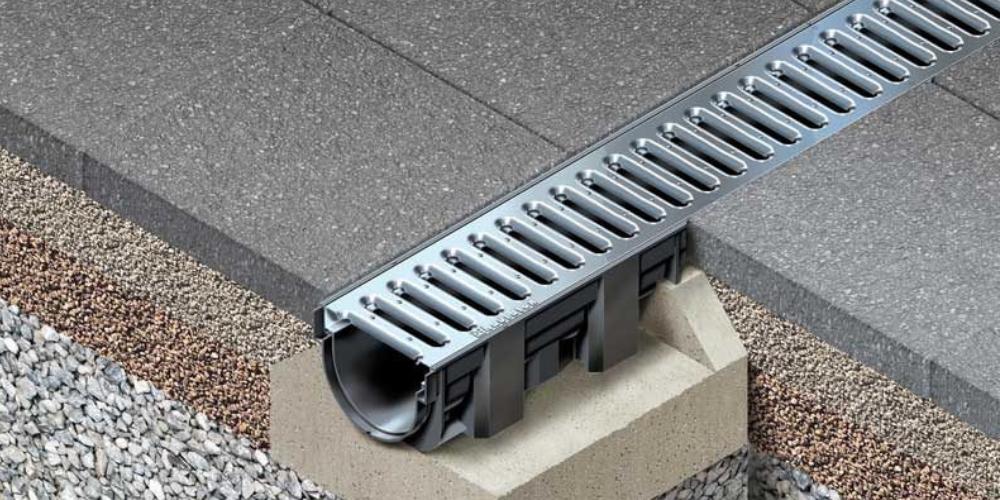Differences:
Channel drains and trench drains are two types of drainage systems that are often used to manage surface water. While they serve a similar purpose, there are some key differences between the two:
- Shape and Design: The main difference between channel drains and trench drains is their shape and design. Channel drains are typically U-shaped and have a wider, open top that allows for more water to flow through. Trench drains, on the other hand, are typically V-shaped and have a narrow opening at the top that restricts the amount of water that can flow through.
- Installation: Another difference between the two is the way they are installed. Channel drains are typically installed on the surface of the ground, and are often used in areas where there is a need to maintain a level surface. Trench drains, on the other hand, are typically installed flush with the ground, and are often used in areas where there is heavy foot or vehicular traffic.
- Cost: In general, trench drains tend to be more expensive to install than channel drains. This is due to the fact that trench drains require more excavation and preparation work before they can be installed.
- Application: Channel drains are often used in residential and commercial settings where there is a need to manage water runoff from rain or irrigation. They are also commonly used in pool areas, sports fields, and other areas where surface water needs to be drained quickly and efficiently. Trench drains, on the other hand, are often used in industrial and manufacturing settings, where there is a need to drain large volumes of water, oil, or other liquids.
Lastly, channel and trench drains serve a similar purpose but have some key differences in their design, installation, and application
Customization of channel drains:
Channel drains, also known as linear drains, offer several advantages in terms of customization compared to traditional point drains. Here are some of the advantages:
- Design Flexibility: Channel drains allow for greater design flexibility as they can be customized to suit the specific requirements of a project. The length, width, and depth of the drain can be adjusted to accommodate the size and shape of the area being drained.
- Aesthetics: Channel drains can be customized to blend in with the surrounding environment. For instance, they can be made with different materials such as stainless steel, brass, or even colored plastic, to match the surrounding decor.
- Easy Installation: Channel drains are relatively easy to install, as they require fewer connections and can be placed in a straight line or at an angle, depending on the installation requirements. This makes them ideal for both indoor and outdoor installations.
- Versatility: Channel drains can be used in a variety of applications such as shower stalls, driveways, pool decks, patios, and even commercial kitchens. They are also suitable for both residential and commercial applications.
- Maintenance: Channel drains are easy to clean and maintain. They have fewer nooks and crannies for debris to accumulate, and they can be easily accessed for cleaning.
Overall, the customization advantages of channel drains make them a popular choice for architects, designers, and homeowners who are looking for a practical, yet aesthetically pleasing drainage solution
